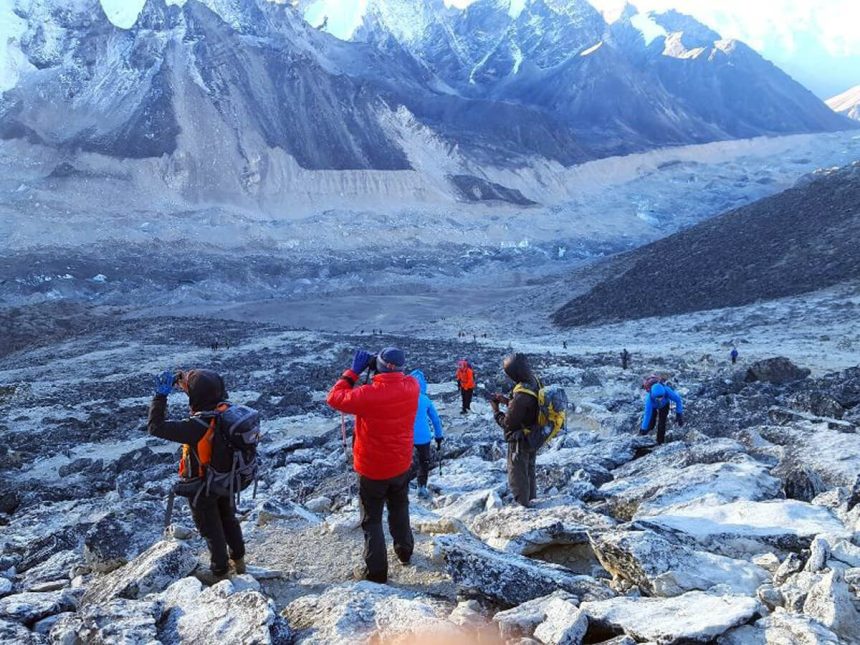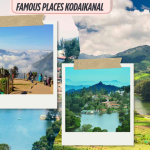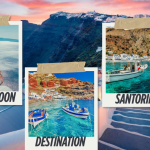Trekking in Nepal is the extreme enterprise for anybody who adores the mountains. The towering Himalayas, with their snow-capped crests and winding trails, offer an encounter that’s both lowering and invigorating. Whether you’re a prepared trekker looking for a high-altitude challenge or a fledgling trusting to drench up the breathtaking view, Nepal has a path for you. From the amazing Everest Base Camp to the quiet Annapurna Circuit, let’s investigate the best Himalayan treks for each level of adventurer.
1. Why Trekking in Nepal is a Must-Do
Nepal is more than fair a nation; it’s a portal to a few of the most fabulous scenes on soil. The Himalayas are domestic to eight of the world’s fourteen most elevated crests, counting Mount Everest (Sagarmatha), which stands at a jaw-dropping 8,848 meters (29,029 feet).
But it’s not fair around the mountains — it’s around the culture. Trekking in Nepal implies passing through old towns, assembly inviting local people, and encountering the profound otherworldly air of Buddhist religious communities and supplication banners vacillating in the wind. It’s a blend of normal magnificence and social lavishness that’s difficult to discover anyplace else.
2. Best Time to Journey in Nepal
Wondering when to arrange your journey? The best times are spring (Walk to May) and harvest time (September to November).
Spring: Rhododendron woodlands sprout with dynamic colors, and the climate is warm and stable.
Autumn: Clear skies, direct temperatures, and breathtaking mountain sees make it the most well known season.
Avoid the rainstorm season (June to Admirable) unless you appreciate sloppy trails and restricted perceivability. Winter (December to February) can be cruel, but it’s calmer and offers fresh, snow-covered views.
3. Best Himalayan Treks for Beginners
New to trekking? No stresses — Nepal has bounty of trails that are beginner-friendly but still pressed with staggering sees and social experiences.
3.1. Ghorepani Poon Slope Trek
Duration: 4–5 days
Max Elevation: 3,210 meters (10,531 feet)
Difficulty: Simple to moderate
The Poon Slope Journey is culminate for first-time trekkers. It’s generally brief but rewards you with jaw-dropping sees of Annapurna and Dhaulagiri at dawn. The path passes through rhododendron timberlands, charming towns, and terraced fields.
3.2. Langtang Valley Trek
Duration: 7–10 days
Max Height: 4,984 meters (16,352 feet)
Difficulty: Moderate
Langtang Valley is a covered up jewel. It’s less swarmed than other trails and offers shocking sees of snow-covered crests. The path takes you through yak pastures and Tibetan-style towns, giving you a taste of neighborhood culture.
4. Best Treks for Middle Trekkers
Ready to step up your trekking diversion? These treks are more challenging but not extraordinary, combining enterprise with unimaginable scenery.
4.1. Annapurna Circuit Trek
Duration: 14–21 days
Max Elevation: 5,416 meters (17,769 feet)
Difficulty: Direct to challenging
The Annapurna Circuit is one of the most celebrated treks in the world. It offers a blend of scenes — from lavish subtropical woodlands to high-altitude deserts. The highlight? Crossing the Thorong La Pass, where you’ll feel like you’re on beat of the world.
4.2. Everest Base Camp Trek
Duration: 12–14 days
Max Height: 5,364 meters (17,598 feet)
Difficulty: Direct to challenging
Everest Base Camp is a bucket-list journey for numerous travelers. Taking after in the strides of incredible mountain climbers, you’ll pass through Sherpa towns, suspension bridges, and old cloisters some time recently coming to the base of the world’s tallest top. The sense of accomplishment when you stand at base camp is unbeatable.
5. Best Treks for Experienced Trekkers
If you’re longing for a genuine challenge, these high-altitude treks will thrust your limits whereas fulfilling you with unmatched beauty.
5.1. Manaslu Circuit Trek
Duration: 14–18 days
Max Height: 5,106 meters (16,752 feet)
Difficulty: Challenging
The Manaslu Circuit is farther and tough. You’ll require a extraordinary allow, but the confinement makes it worth it. The path circles Mount Manaslu, passing through Buddhist towns and cold valleys. It’s calmer than Everest and Annapurna, advertising a more off-the-beaten-path experience.
5.2. Kanchenjunga Base Camp Trek
Duration: 20–25 days
Max Height: 5,143 meters (16,873 feet)
Difficulty: Exceptionally challenging
Kanchenjunga is the third-highest top in the world, and trekking to its base camp is no joke. The path is long, farther, and physically requesting — but the untouched wild and emotional mountain sees make it a journey of a lifetime.
6. High-Altitude Tips and Security Advice
Trekking in the Himalayas implies managing with elevation, which can be extreme on your body. Here’s how to remain safe:
Acclimatize appropriately – Take rest days and climb gradually to permit your body to adjust.
Stay hydrated – Parchedness makes height ailment worse.
Listen to your body – If you feel bleary eyed or queasy, plummet immediately.
Carry legitimate adapt – A great match of climbing boots and layered clothing are essential.
7. What to Pack for Trekking in Nepal
Packing shrewd can make or break your journey. Here’s a fast checklist:
Clothing: Warm layers, waterproof coat, climbing pants, gloves, and a hat
Footwear: Strong climbing boots and warm socks
Essentials: Shades, sunscreen, trekking posts, and a water refinement system
Snacks: High-energy snacks like nuts and chocolate bars
First Help: Incorporate elevation affliction pharmaceutical and rankle pads

8. Social Behavior Whereas Trekking
Respecting nearby culture is a enormous portion of trekking in Nepal:
Greet local people with “Namaste.”
Don’t touch people’s heads — it’s considered sacred.
Walk clockwise around stupas and mani walls.
Ask consent some time recently taking photographs of people.
9. Why You Require a Direct and Porter
While a few treks can be done solo, enlisting a direct and watchman has its advantages:
Guides offer assistance with route and dialect barriers.
Porters help your stack, making the journey easier.
Local back makes a difference the Nepalese economy and guarantees you’re trekking responsibly.
10. Mindful Trekking – Take off No Trace
The Himalayas are wonderful, so let’s keep them that way:
Carry out all trash.
Avoid single-use plastics.
Use assigned fire pits (or none at all).
Stay on stamped trails to ensure vegetation.
Read More: From Hills to Beaches: Best Places for a Vacation in India
Conclusion
Trekking in Nepal is more than fair a physical challenge — it’s a travel through a few of the most breathtaking and profoundly wealthy scenes in the world. Whether you’re handling the Everest Base Camp or investigating the calmer trails of Manaslu, the sense of achievement and association with nature is unmatched. So bind up your boots, take a profound breath of that fresh mountain discuss, and get prepared for the enterprise of a lifetime.







